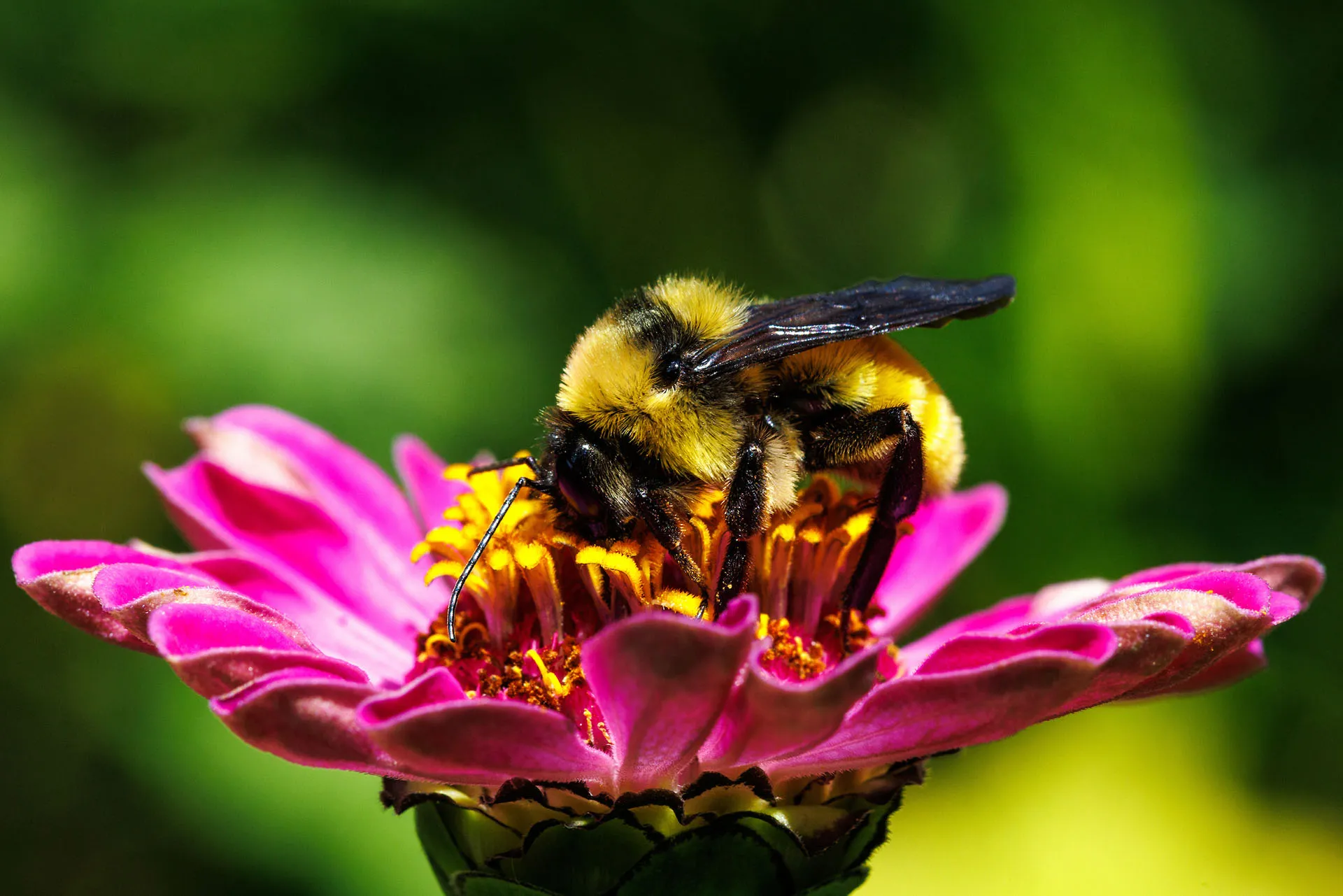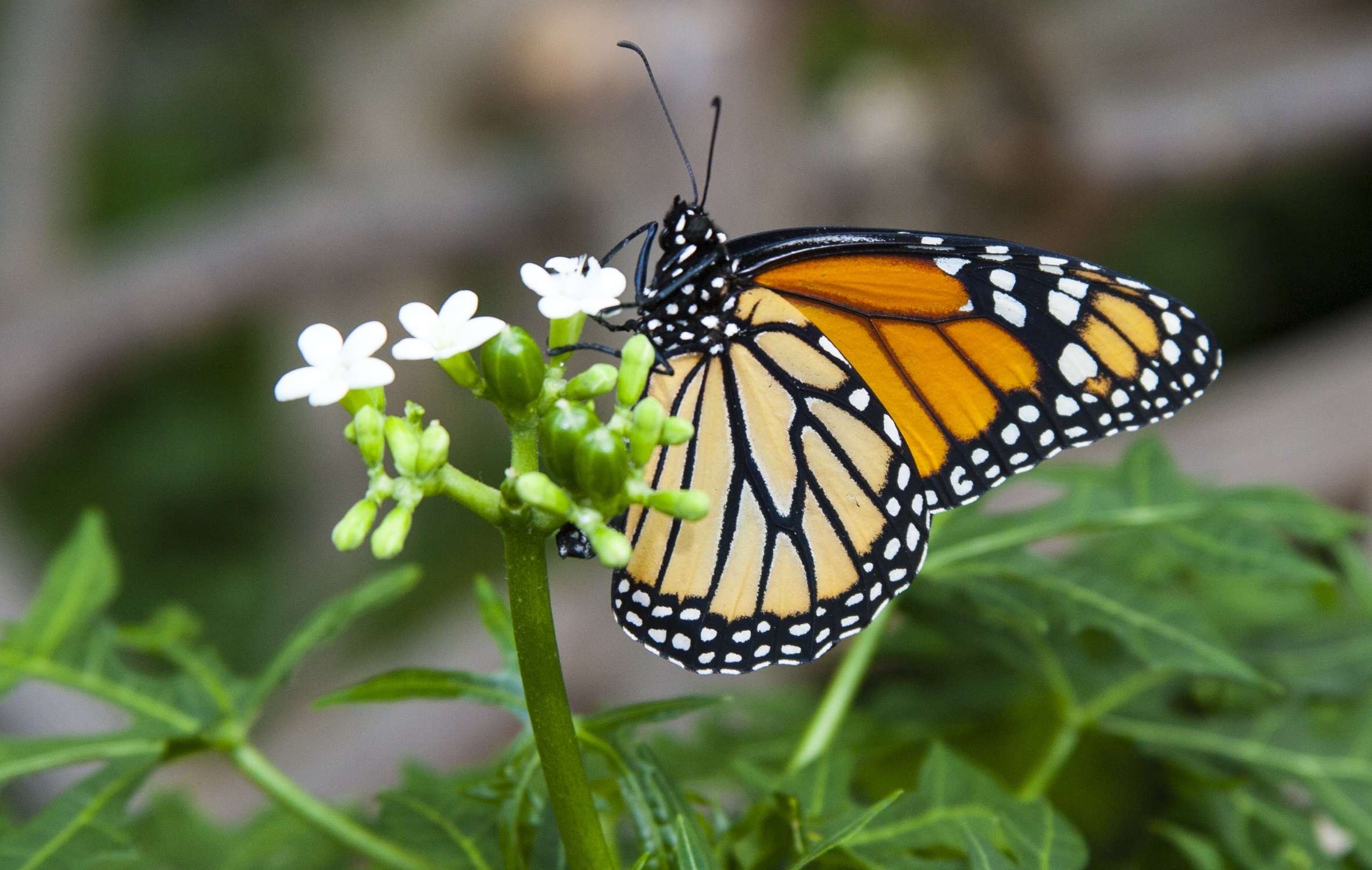Pollinators are a vitally important part of our ecosystem, helping native plants reproduce by spreading pollen – their genetic material – between plants in different locations.
They also aid humans by helping to pollinate the crops that we rely on for food. Scientists estimate the reproduction of 75% of the world’s flowering plants and 35% of its food crops depends on pollinators, according to the United States Department of Agriculture’s National Institute of Food and Agriculture. The Pollinator Partnership, a nonprofit organization, estimates pollinators are responsible for one out of every three bites of food humans eat, helping to pollinate more than 180,000 plant species and 1,200 crops around the world.
Despite their importance, pollinators are declining due to human-induced habitat loss and the use of pesticides. As of June 2020, the United States Fish and Wildlife Service listed more than 70 pollinator species as threatened or endangered. Among these are iconic animals like the Monarch Butterfly, which is listed as vulnerable, according to the International Union for the Conservation of Nature (IUCN) Red List of Threatened Species.
Fortunately, helping these critically important species doesn’t have to be difficult and can even be accomplished at home. Supporting pollinators can be as simple as planting particular plant species in your yard, with different shapes, colors, and scents each attracting different pollinators.
If you’re hoping to attract bees, butterflies, or hummingbirds to your yard, here are a few options that thrive in the eastern broadleaf forest habitats of East Tennessee.


Honeybees and native bees
Honeybees were introduced to the United States from Europe more than 400 years ago, and while they are non-native, they have since come to serve as vital resources for pollinating important food crops. Honeybees aren’t the only species to worry about, though. East Tennessee is home to a variety of bee species that also includes ground-dwelling and wood-nesting bees like bumble bees, carpenter bees, and leafcutter bees.
Bees prefer white, yellow, or blue flowers with a shallow shape suitable for landing. Gardeners hoping to attract more bees to their yards should plant Eastern Redbud Trees, Bee Balm and sunflowers; groundcover like Alfalfa or clovers; or shrubs like Buttonbush, blackberries, raspberries, and elderberries.
Butterflies
The Monarch is arguably the most iconic butterfly in North America. Gardeners who would like to tempt them to their yard for a stopover during their migration between Central Mexico and the Northern United States should plant varieties of milkweed, including Swamp Milkweed, Common Milkweed, and Butterfly Weed. Monarchs drink the nectar from milkweed plants to sustain them during their migration, but they also exclusively lay their eggs on milkweeds, which their caterpillars use as food while they grow.
Milkweeds also will attract other butterfly species, but for more variety, choose native plants with bright blooms and narrow flowers. Asters, Joe-pye Weed and coneflowers like Purple and Tennessee Coneflower are also great options to attract butterflies.
Moths
Unlike butterflies, which are primarily active during the day, moths are typically most active in the evening and at night. Choose plants with dull red, purple, pink, or white blossoms that begin to open and smell strongly in the evening or at night. Wild Columbine, Basswood and varieties of phlox are all options that attract moths.
Hummingbirds
A hummingbird feeder with a natural, dye-free nectar mixture made from sugar and water is av great way to attract hummingbirds to your hard. There are also a few natural options available for gardeners who want to enjoy these energetic migratory birds during their annual visits to the eastern reaches of the Volunteer State.
Hummingbirds like red, orange, or white funnel- or cup-shaped flowers. Coral Honeysuckle, Trumpet Vine, Red Buckeye, and Woodland Pinkroot (Indian Pink) or native species of lilies or violets are all good options for drawing hummingbirds to your yard.
It is important to note that most of the plants on this list won’t only attract a single type of pollinator. Bees, hummingbirds, moths, beetles, and butterflies will all make use of many of the plants listed here, which will keep your garden populated with beneficial pollinators of all types. To attract more pollinators, choose a variety of native plants with different blooming seasons, shapes, colors, and sizes.
The Tennessee Aquarium’s Pollinator Pathways initiative is supported by the Tennessee Department of Transportation’s Pollinator Habitat Program.
